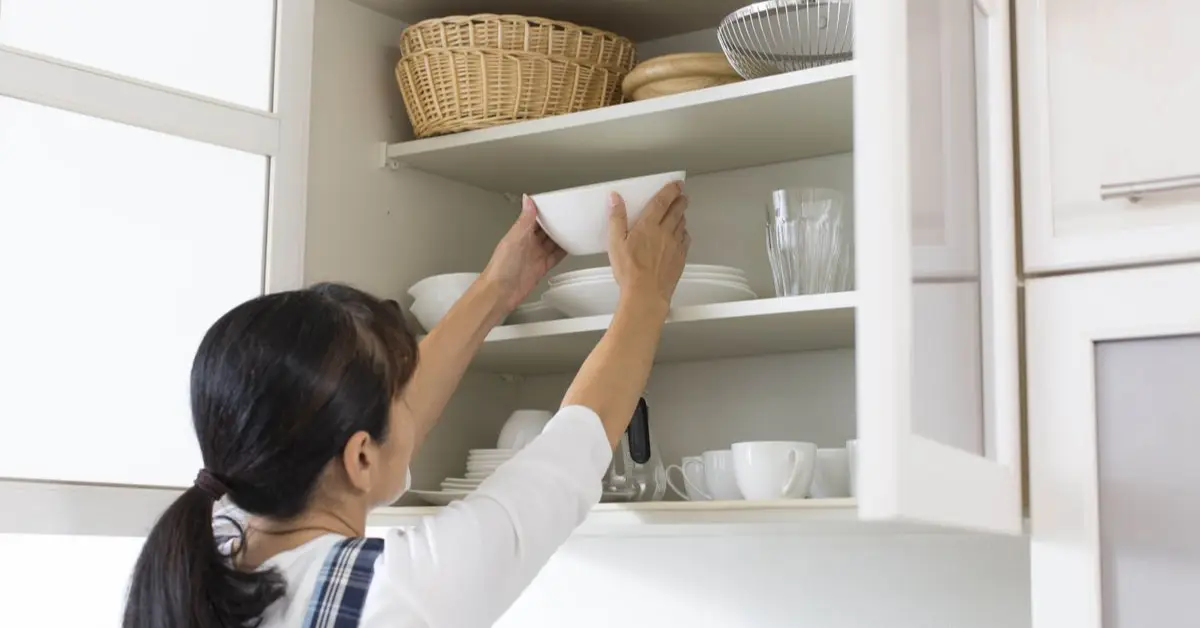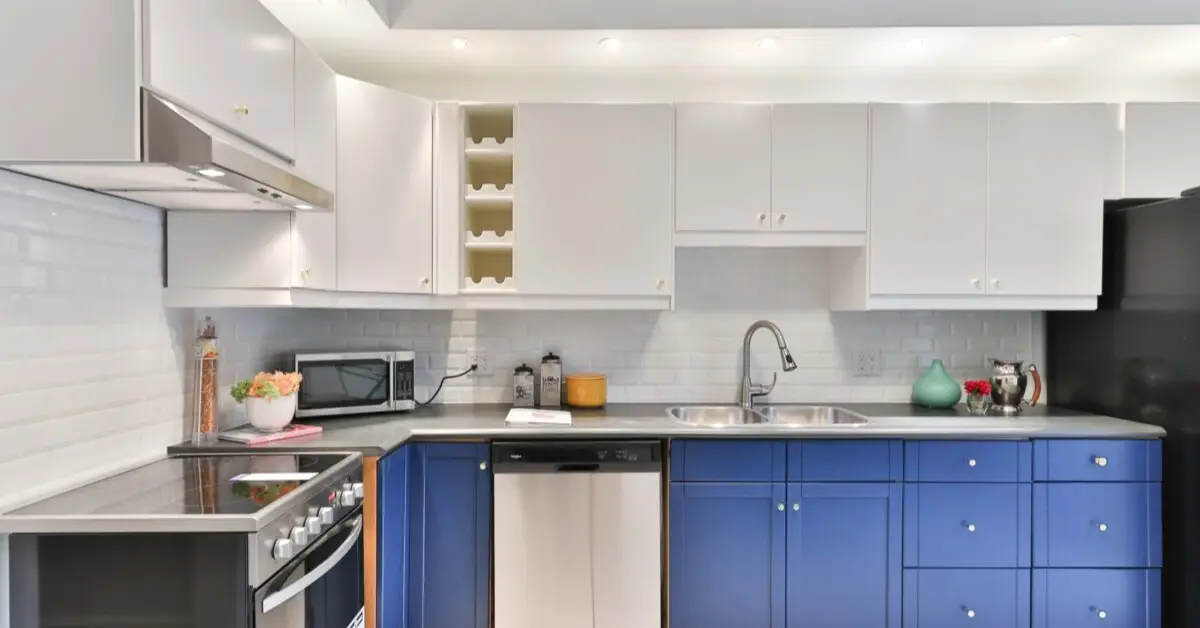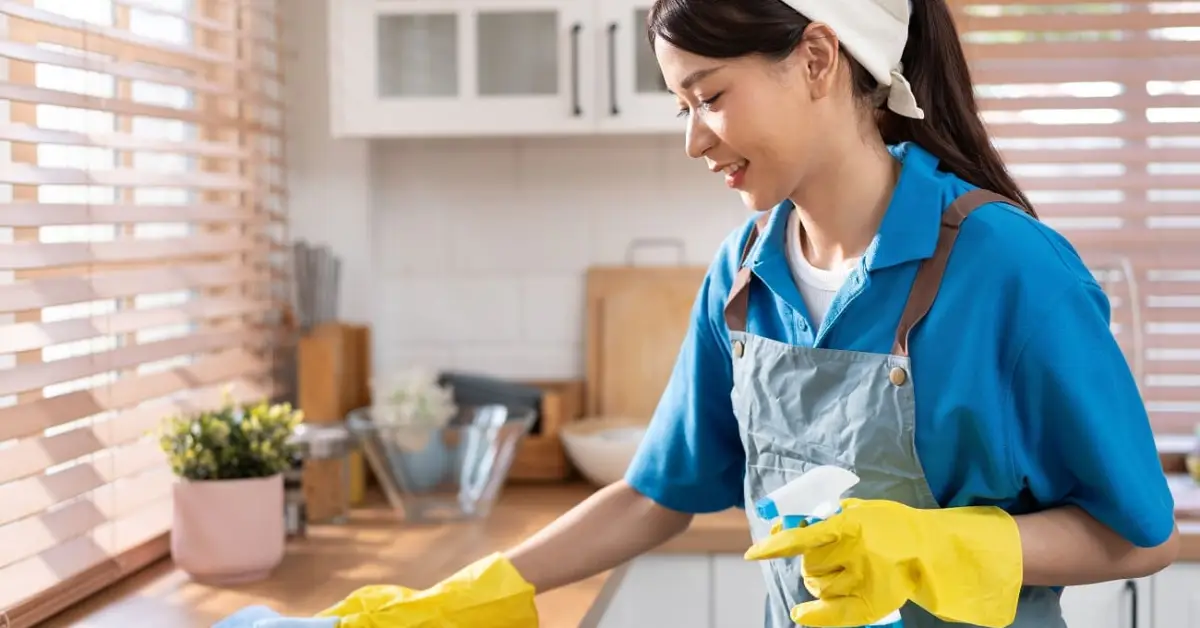10 Genius Tricks to Make Your Wooden Kitchen Cabinets Look Brand New
If you’ve ever opened your kitchen and noticed that thin layer of grease clinging to your cabinet doors, you’re not alone. Even the cleanest kitchens slowly build up a film of oil, fingerprints, and food residue that dulls the wood’s shine. Most people grab an all-purpose cleaner and call it a day — and that’s where the trouble starts.
Wood cabinets aren’t like laminate or steel. They absorb moisture, react to harsh chemicals, and can lose their finish faster than you’d think. I’ve seen homeowners ruin beautiful oak panels just by using vinegar too often or skipping the drying step. The result? Cloudy patches, sticky corners, and years shaved off the cabinet’s life.
The truth is, cleaning wood cabinets isn’t about scrubbing harder — it’s about understanding what the material needs. Once you get that balance right, it takes half the effort and gives double the shine. In this guide, I’ll share ten tried-and-tested hacks that professionals and meticulous homeowners swear by — from smart prep to finish protection.
By the end, you’ll know not just how to clean your wooden cabinets, but how to keep them looking new for years without expensive products or guesswork.
So before you grab that bottle of vinegar or dish soap, let’s talk about what your cabinets really need. What’s been your biggest struggle when it comes to cleaning them — grease build-up, fingerprints, or old grime that won’t come off?
Understand Your Cabinet Wood & Finish Before Cleaning
Before I ever pick up a cleaner, I first understand what type of wood and finish I’m working with. As Martha Stewart explains in her cleaning guide, the finish on your cabinets determines how much moisture and cleaning product they can handle. Wood is naturally porous, so even a quick wipe with too much liquid can seep in and cause swelling or warping if the surface isn’t sealed properly.
Here’s how to identify what you’re dealing with:
- Solid wood (finished) — Sturdy but sensitive to water. Use only slightly damp cloths and dry immediately.
- Veneer — A thin wood layer over engineered board; avoid soaking, as it can loosen the veneer.
- Stained or sealed wood — A protective coat makes light soap and water safe — just remember to rinse and dry well.
- Painted cabinets — Skip acidic or abrasive cleaners. They can dull the paint or strip the topcoat.
- High-gloss or lacquer finishes — These show streaks easily; use a soft, barely damp microfiber and buff dry for shine.
Before cleaning, take a minute for this quick checklist:
- Check inside doors or drawers for any manufacturer label — some specify safe cleaning products.
- Do a patch test on a hidden area (like the underside of a shelf) with your chosen cleaner.
- Inspect for loose edges, cracks, or peeling; treat those gently and avoid heavy moisture.
Knowing your finish protects your investment. As Martha Stewart notes, the wrong method can dull, lift, or permanently damage the surface — and prevention is far easier than repair.
Pre-Cleaning Prep: Decluttering, Dusting & Protecting Hardware

Before diving into any deep cleaning, I always take a few minutes to prep. It’s one of those professional habits that makes all the difference.
Here’s a solid prep checklist:
- Empty your cabinets — Take out dishes, spices, or cookware so nothing gets splattered or wet.
- Dust or vacuum first — Use a dry microfiber cloth or a vacuum with a brush attachment. This keeps dry dirt from turning into sticky grime once you add cleaner.
- Tackle hardware — Loosen knobs or handles if possible, or use a small brush around them. They collect more grease than most people realize.
- Protect your area — Lay down old towels or a drop cloth on your counters and floor. It saves cleanup time later and prevents stains from cleaner drips.
Taking five minutes for this setup means you’ll clean faster and more effectively. It also keeps water and residue from spreading where it shouldn’t. Skipping this step might seem harmless, but that’s where most people accidentally move grime around instead of removing it.
Hack #1: Gentle Degreasing with Dish Soap & Warm Water
Whenever I’m faced with dull, sticky cabinet doors, I skip the fancy cleaners and go straight for the simplest solution: warm water and mild dish soap. It’s gentle, budget-friendly, and according to Real Simple, this combination is one of the best ways to lift grease without damaging your wood’s finish.
Here’s the method I use:
- Fill a small bucket or bowl with warm water and add a few drops of a neutral dish soap (Dawn is perfect).
- Dip a microfiber cloth into the mix, wring it out well — it should be damp, not dripping.
- Wipe your cabinets from top to bottom, following the grain of the wood.
- Rinse the cloth often to avoid spreading grease back onto the surface.
- Once you’re done, go over everything again with a clean cloth dampened in plain water to remove any soap residue.
- Finally, dry thoroughly with a second microfiber towel.
Dish soap cuts grease film gently without stripping finish or discoloring the wood. It’s safe enough to use regularly, even on high-use areas like around the stove — just remember to do a deeper clean about once a month if you cook frequently.
Hack #2: Tackle Tough Grease Spots with Vinegar Mix or Wood Soap
Sometimes, no matter how much wiping you do, there’s a sticky film that won’t budge. For those spots, I use one of two proven methods.
Option A: The Vinegar Mix
- Mix ½ cup distilled white vinegar + ½ cup warm water in a spray bottle.
- Lightly mist over greasy spots — don’t drench the surface.
- Wipe gently with a soft cloth, following the grain.
- Rinse with a damp cloth, then dry immediately.
Option B: The Wood Soap Solution
- For heavy grease, use a wood-safe cleaner like Murphy’s Oil Soap.
- Dilute it according to label instructions.
- Apply with a damp cloth, wipe, rinse, and dry.
A word of caution: vinegar is great for cutting grease, but it can be harsh on some finishes if used too often. So I test on a hidden patch first and only use it occasionally, not as a daily cleaner. If you’re also dealing with older finishes like honey oak and want to refresh them while cleaning, check out our guide on modernizing a kitchen with honey oak cabinets.
Hard grease builds up slowly and resists mild soap. These two options restore the wood’s clarity and glow — safely, without dulling or lifting the finish.
Hack #3: Deal with Crevices, Hardware & Moulding Details

Even after you’ve wiped your cabinets, the tiny grooves and hardware edges often stay greasy. That’s because grime collects in the smallest corners where cloths can’t reach.
Here’s how I handle that:
- Use a soft toothbrush or nylon detailing brush dipped in mild soapy water to scrub around handles, hinges, and corner mouldings.
- If you can, remove the hardware and clean it separately in warm, soapy water. Dry completely before reinstalling.
- For narrow grooves or trim, wrap a microfiber cloth around a flat tool (like a butter knife) or use a cotton swab.
These little details take just a few extra minutes but elevate your results dramatically. Once you’ve cleaned those spots, your cabinets won’t just look clean — they’ll feel like new.
Dirt left in corners seeps out again later, dulling your work. Cleaning these details gives that “like-a-pro” finish most people miss.
Hack #4: Dry/Wipe-Down Strategy to Protect the Wood Finish
Right after cleaning, don’t walk away and let them air-dry. The key to protecting your cabinets is to dry them right away with a clean, dry microfiber cloth.
Here’s the quick post-clean routine I follow:
- After rinsing, immediately wipe down each surface with a dry cloth.
- Check edges, handles, and lower panels — those areas trap moisture easily.
- Buff lightly to remove streaks and bring back the shine.
- Keep cabinet doors open for 10–15 minutes so any hidden moisture evaporates.
The drying step protects the wood finish and keeps dirt from sticking to leftover cleaner or water spots. Most people skip it — and that’s exactly how cabinet finishes start to fail early.
Hack #5: Regular Maintenance Schedule to Prevent Build-Up
One mistake I see often is waiting until cabinets look dirty. By that point, grease and dust have already hardened. Instead, build a light cleaning schedule — Good Housekeeping recommends routine upkeep as the key to maintaining wood.
Here’s a realistic schedule tha
- Weekly: Quick wipe-down of door fronts and handles using mild soapy water.
- Monthly: Deeper clean of outer surfaces and hardware.
- Seasonally: Empty cabinets, vacuum shelves, and wipe interiors.
Keep a microfiber cloth and a small bottle of cleaner nearby — maybe under the sink — so it’s easy to keep up.
Regular care prevents grime from becoming a thick film that needs harsh treatment later. Once you stay consistent, cleaning turns from a tiring chore into a five-minute refresh.
Hack #6: Use Finish-Friendly Polish or Protective Coat

Once your cabinets are completely dry, this is where you can take things from clean to showroom-ready. Applying a finish-safe polish or wax helps restore that soft glow wood is known for, while also sealing the surface against future grease and dust.
Here’s what works best:
- Use a light furniture polish that’s specifically made for wood finishes.
- Apply a small amount on a soft microfiber cloth and buff gently, following the grain.
- For deeper nourishment, try a beeswax-based conditioner — but only if your manufacturer’s care guide approves it.
- Avoid heavy, oil-based waxes or multipurpose sprays — they can leave a sticky film that attracts dirt over time.
This step gives your cabinets that smooth, refined finish you see in design magazines. More importantly, it preserves the wood’s natural oils, keeps moisture out, and prevents dullness — the kind of result professionals aim for after a deep clean. For color inspiration and design ideas that complement freshly cleaned wood, explore our feature on sage green cabinets.
Hack #7: Address Inside Surfaces, Drawers & Hidden Zones
Most people stop at wiping the cabinet doors, but real cleanliness means tackling the interiors as well. Once or twice a season, take a few minutes to refresh these overlooked spaces.
Here’s a simple process:
- Empty all drawers and cabinets completely.
- Vacuum the inside with a brush attachment to remove crumbs or dust.
- Wipe all interior walls and shelves with a mild dish soap solution and a damp cloth.
- Dry thoroughly with a clean towel — moisture inside cabinets can cause swelling or odor.
- Don’t forget the undersides of cabinet doors and the top of tall cabinets — both trap greasy dust.
- Line your shelves with easy-to-clean liners to make future maintenance quicker.
Clean interiors help prevent mold, pests, and lingering smells. It also ensures your dishes, spices, and food storage stay hygienic — completing the “pro” standard of cleaning most people skip.
Hack #8: Preventative Habits to Protect Your Wood Cabinets Going Forward
Even the best cleaning routine won’t matter if daily habits invite grime back. The smartest move? Reduce exposure from the start.
Here’s what I’ve found works long term:
- Always turn on the exhaust fan or range hood while cooking to minimize airborne grease.
- Wipe splatters immediately instead of letting them dry — it saves hours later.
- Avoid setting hot pans or open liquid containers near cabinet fronts; steam and moisture can warp the wood.
- Use handles or knobs when opening cabinets rather than pushing on the doors — it minimizes fingerprints and finish wear.
These small habits build up to big savings in maintenance time. Preventing grime means your deep cleans become quick refreshes, not full weekend projects.
Hack #9: Quick Daily / Emergency Spot-Clean Tricks

Life happens. From greasy fingers to tomato sauce splashes, having a quick response plan keeps your cabinets spotless between deep cleans.
Here’s what to do depending on the mess:
- Fingerprints or smudges: Wipe with a damp microfiber cloth + mild soap mix, then dry immediately.
- Sticky spots (kids or splashes): Use a diluted dish soap solution; rinse and dry well.
- Colored food spills (like sauce or wine): Make a paste of baking soda + water, apply gently, wipe off, and dry.
These mini-hacks make your cleaning routine realistic for daily life. They give you the confidence to handle any small mess instantly, without reaching for harsh chemicals or waiting for the weekend.
Hack #10: When to Call a Pro or Refinish vs Replace
Sometimes, no matter how carefully you clean, the damage goes beyond surface dirt. Knowing when to stop scrubbing and call a professional saves you from costly mistakes.
Here’s how to tell:
- Deep scratches or dents that expose bare wood.
- Flaking finish or peeling veneer.
- Severe warping due to moisture.
- Areas where the wood has darkened or discolored permanently.
When that happens, contact a cabinet refinisher or your manufacturer for guidance. They can advise if refinishing (sanding and resealing) will restore the look — or if replacement is more cost-effective. If you prefer a gentle, damage-free cleaning routine instead of refinishing, you’ll love our article on 7 simple ways to clean wood cabinets without damaging them.
Final Wrap-Up
If you’ve followed these ten hacks, you now know the best way to clean your wood kitchen cabinets — safely, effectively, and like a professional. You’ve learned how to tackle everything from daily grease and fingerprints to deep detailing and long-term protection. What matters most isn’t just cleaning — it’s maintaining the warmth and beauty that real wood brings to your kitchen.
Before you get started, remember these essentials:
- Always test any cleaner or homemade solution on a hidden corner first.
- Follow your cabinet manufacturer’s care instructions whenever available.
- Avoid harsh tools or strong chemicals — they can strip finishes or warp wood over time.
If you found these tips helpful, I’d love to hear from you — What’s the biggest challenge you face when keeping your kitchen cabinets clean? Share your thoughts in the comments below, or explore more home-care insights at Build Like New for expert cleaning and maintenance guides designed to keep your space looking its best.
Disclaimer: The information shared here is based on general cleaning practices and personal experience. Results may vary depending on your cabinet’s wood type, finish, and age. For custom, antique, or heavily damaged cabinets, it’s best to consult a qualified refinishing professional.


